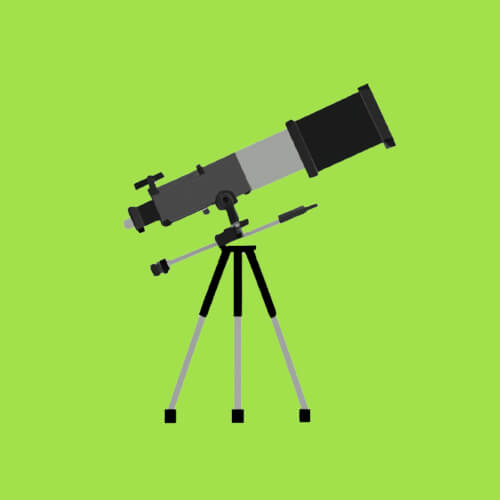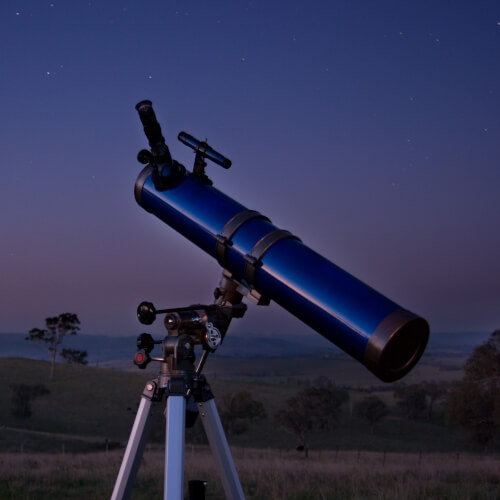



A telescope is a device used to observe distant objects in space. It collects and magnifies light, allowing us to study celestial bodies, including planets, stars, asteroids, etc., that are beyond the reach of our naked eyes.
Telescopes consist of a few key parts: the lens or mirror, which gathers light and forms an image, and the eyepiece, which magnifies the image for viewing. They also come in two main types: refracting telescopes that use lenses to focus light, and reflecting, or Newtonian telescopes that use mirrors.
Hans Lippershey, a Dutch eyeglass maker, is often credited with creating the first refracting telescope in 1608. His invention used a curved lens and eyepiece, allowing for magnified views of distant objects. Shortly after, Galileo Galilei improved design and made significant discoveries, including the moons of Jupiter and the phases of Venus.
As telescopes evolved, astronomers continued to refine their parts and increase their power. Isaac Newton's development of the reflecting telescope in the late 17th century paved the way for further advancements and even more discoveries. Reflecting telescopes, which collect much more light than refracting telescopes, became instrumental in revealing deeper insights into the cosmos.
Telescopes come in many different forms, each designed for specific purposes and catering to different observational needs. Here are some common types of telescopes:
In 1965, while working at Bell Labs, Arno Penzias and Robert Wilson accidentally stumbled upon a persistent noise in their radio telescope. They soon realized that the noise was coming from all directions in the sky and could not be attributed to any known source.
After considering various possibilities, they concluded that they had discovered the cosmic microwave background radiation (CMB), AKA the afterglow of the Big Bang. Penzias and Wilson's accidental discovery of the CMB not only confirmed a major scientific theory but also earned them the Nobel Prize in Physics in 1978.
In 1610, Italian astronomer Galileo Galilei made a groundbreaking observation using a telescope he constructed. He discovered four large moons orbiting the planet Jupiter. These moons, now known as the Galilean Moons, were named Io, Europa, Ganymede, and Callisto. Galileo's discovery provided strong evidence that Earth wasn't the center of the universe, which was the popular theory at that time.
Caroline, at the age of 14, was passionate about astronomy and spent countless hours observing the night sky with her telescope. During one of her observations, she noticed a tiny speck of light that wasn't present in previous images of the same area. Intrigued by her finding, Caroline reported her discovery to professional astronomers who confirmed that she had indeed discovered a supernova—an exploding star—in the galaxy UGC 3378, located over 240 million light-years away from Earth.
Located in Puerto Rico, the Arecibo Observatory was an engineering marvel and held the record as the largest single-dish radio telescope for over 50 years. Its 305 m diameter dish was nestled within a natural sinkhole and was instrumental in detecting pulsars, mapping asteroids, and investigating the properties of the Earth's atmosphere. Although the Arecibo Observatory tragically collapsed in 2020, its legacy as a pioneer in radio astronomy and space exploration continues to inspire scientists worldwide.
The Gran Telescopio Canarias (GTC) is one of the world's largest optical telescopes. Located on the Canary Islands of Spain, the GTC has a primary mirror measuring 10.4 m (34.1 ft) in diameter. Its large collecting area enables astronomers to gather more light and observe faint and distant objects with exceptional clarity. Starting in 2002, construction took 7 years and cost €130 million!